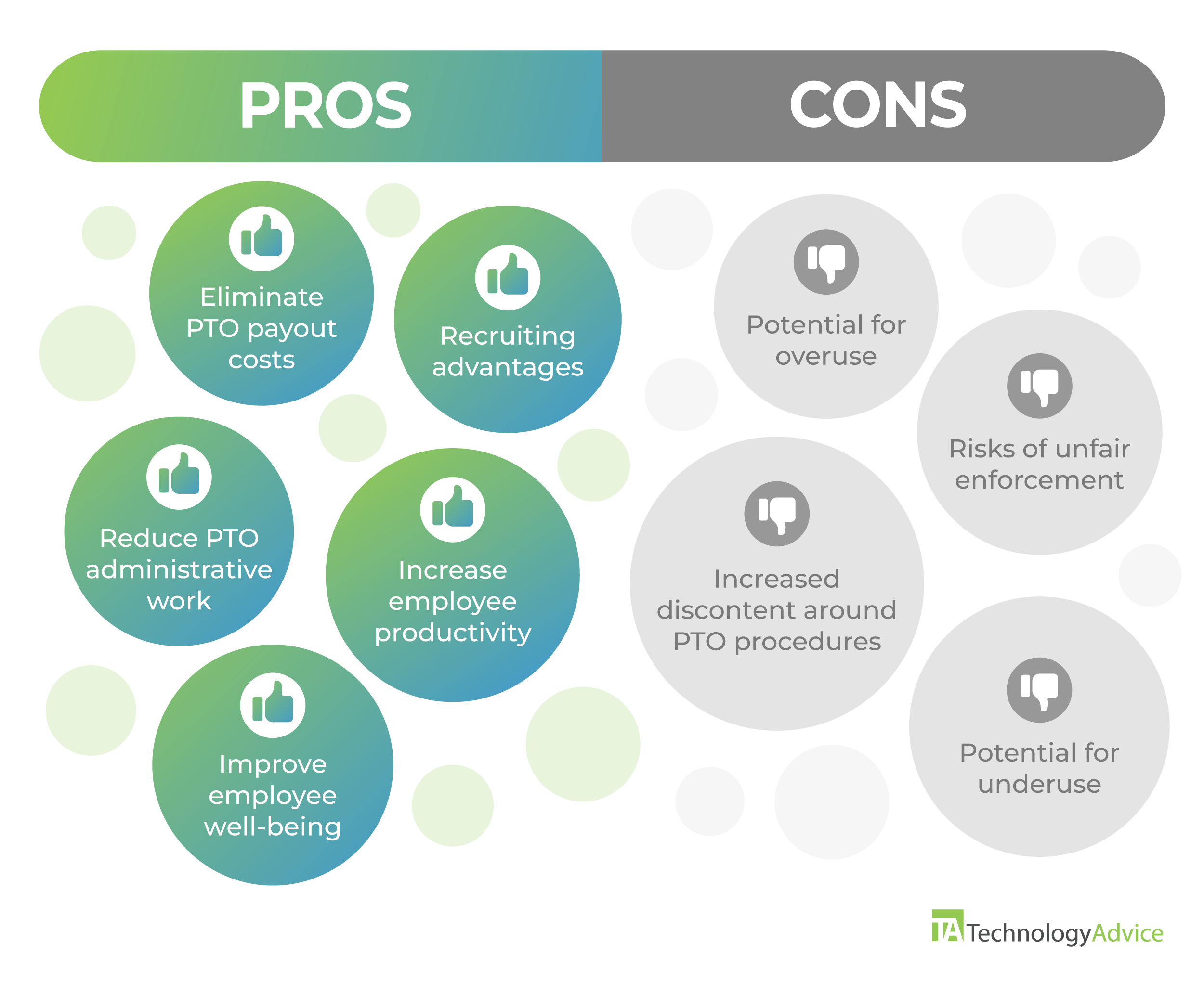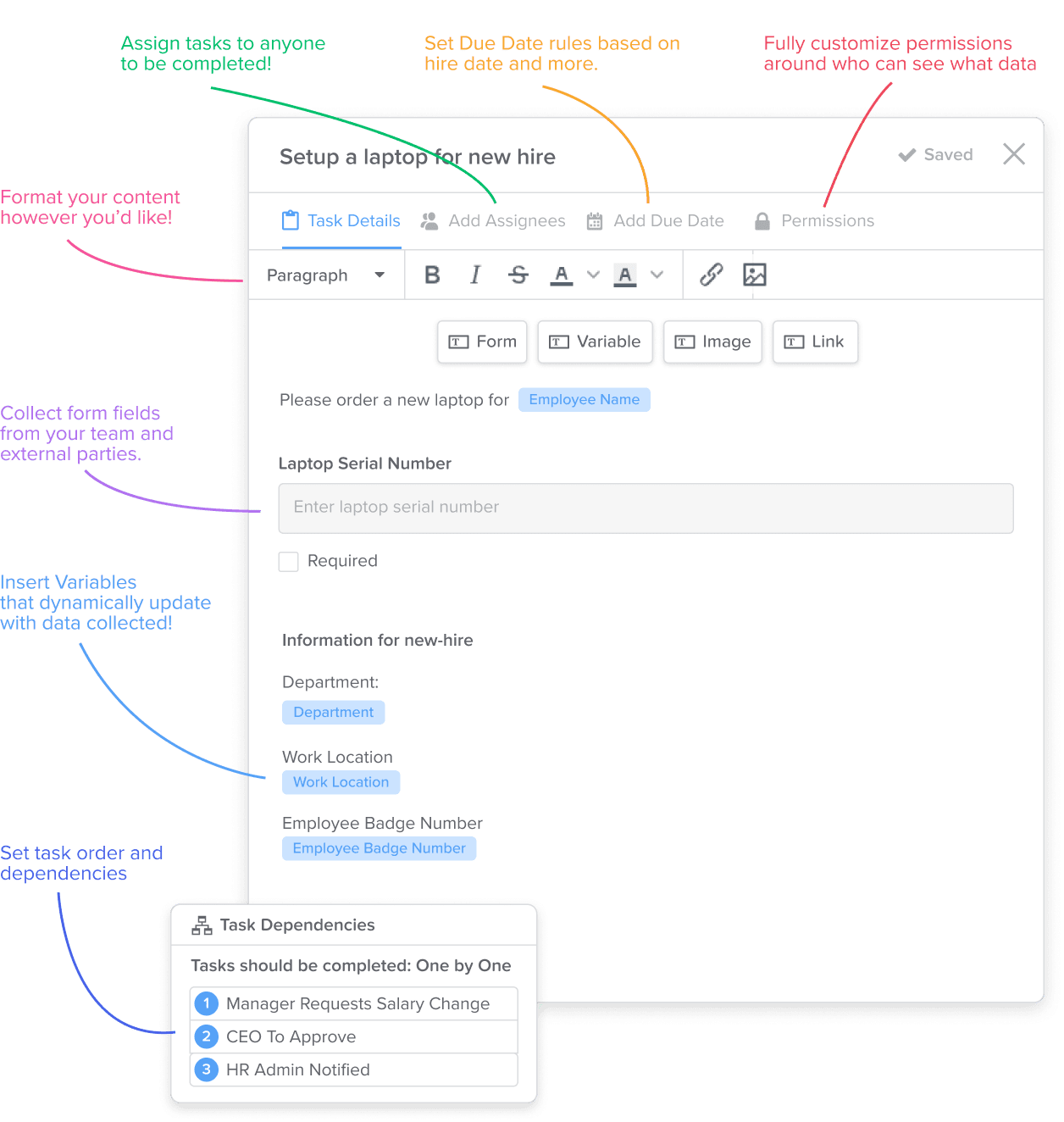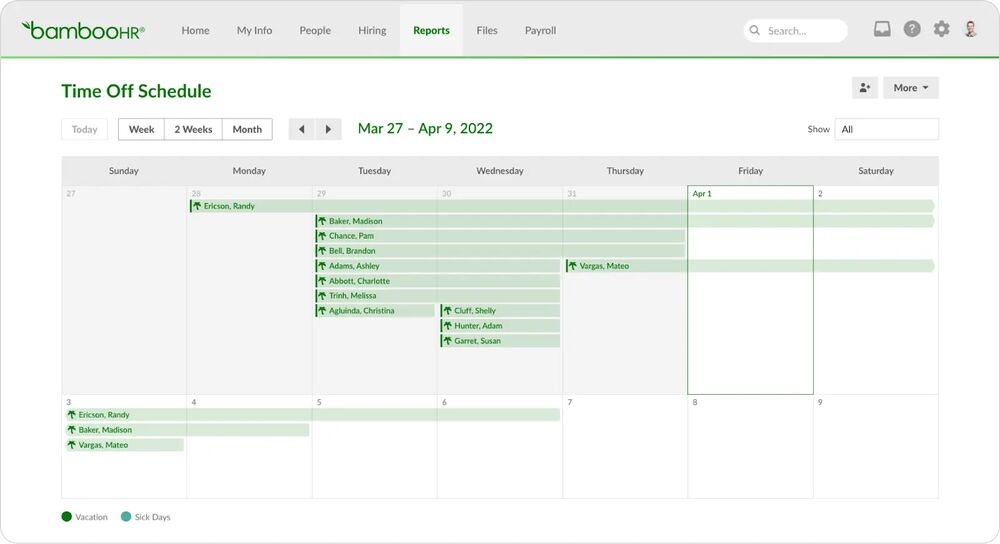HR
Time Tracking Software
Key takeaways
In this article…
What is unlimited PTO?
Unlimited paid time off (PTO) is a type of leave policy that allows employees to take off as much time as they need for vacation, sick, or personal reasons and still receive full pay. The main caveat is that employees must manage their time effectively and meet work expectations.
This contrasts traditional leave policies that have paid leave credits for vacation, sick, bereavement, personal, or floating holiday days off. And, while there’s no cap on the number of unlimited PTO days employees can use in a benefit year, setting up a PTO policy for this leave type will add structure to the requesting, approval, and tracking processes.
Software spotlight: BambooHR SPONSORED
Do you need help tracking who has or hasn’t used their unlimited PTO? Or does your HR team continue to receive calls night and day from employees requesting time off?
BambooHR’s all-in-one HR software can make these problems a thing of the past by simplifying time off procedures for you and your employees.
With BambooHR, you can:
What are the pros and cons of an unlimited PTO policy?

Pros of unlimited PTO
Providing unlimited PTO is a good way of attracting and retaining employees, but it also benefits your company and HR team’s day-to-day operations.
Cons of unlimited PTO
Although offering an unlimited PTO policy sounds attractive as an employee benefit and company recruitment and employee retention tool, it is not for every business.
How to manage unlimited PTO
Although HR software can help with the administrative side of managing PTOs, you can maximize the effectiveness of your unlimited PTO policy by following these steps:
- Put together a formal policy in writing.
- Define the approval process.
- Train managers on enforcement.
- Encourage employees to take time off.
- Review and update the policy regularly.
Not sure where to start on your HR software journey? Check out our The Best HRIS Systems shortlist for practical HR software for first-time users.
1. Put the policy in writing
Start with creating an unlimited PTO policy that outlines how employees can use it. This process can be time-consuming, as it involves collaboration from executives, managers, finance teams, and employees.
However, HR compliance service providers such as Mineral can write federal and multi-state compliant policies and handbooks for your business. This helps minimize the risk of employment law violations and reduces the time it takes to create or update company policies. Watch the below video to learn more about Mineral’s services.
While unlimited PTO policies generally don’t have limits to leave days employees can take at a time, you can add temporary caps to PTO requests (such as 10 leave days per request) during busy seasons. This will help you plan manpower resources and avoid work disruptions. However, if you often need to place temporary time off limits, then a truly unlimited PTO policy may not be right for you. Using a traditionally limited PTO might be a better option for your employees.
2. Define the approval process
A transparent PTO approval process can prevent the abuse or underuse of unlimited PTO. It can also reduce favoritism or bias while increasing employees’ likelihood of using the policy.
HR software like GoCo can help you manage unlimited PTO by creating customized approval workflows. For example, employees can submit paid time off requests through their self-service portal, which automatically goes to managers or HR teams for review.
Once the HR department and manager review the request and consider its impact on other schedules, approved requests automatically display on company-wide schedules. You can even include additional steps to the approval process, such as reminders to follow up with employees on the need for additional leave.

3. Train managers on consistent enforcement
Effective manager training around time-off requests is essential to the success of an unlimited PTO policy. Because they’re on the front lines of the approval process, managers must know how to base decisions on objective criteria like staffing availability and the employee’s performance history. Otherwise, a poorly trained manager might make biased decisions that create employee resentment or tension.
HR software can compile PTO analytics so you can create more equitable PTO approval and enforcement practices. For example, in BambooHR, you can see at a glance who has not taken any PTO during particular periods and investigate further to determine why. HR teams can even pull performance management reports to compare employee productivity with their time off use.

4. Encourage employees to take time off
You can avoid the problem of the “always working” employee and decrease burnout by fostering a company culture that encourages workers to rest. Low engagement rates, performance scores, or other HR metrics are just a few indicators that you have unhappy employees in need of a break.
You can also implement mandatory minimum PTO requirements, regularly remind employees to take PTO, or add time off as a companywide key performance indicator (KPI). This will demonstrate to employees and external stakeholders that the company is committed to maintaining a healthy work-life balance and avoiding exploitative PTO practices.
5. Review and update the policy regularly
As business needs and company culture change, you should reevaluate your unlimited PTO policies. Generally, an annual review cycle provides enough data to reveal actionable insights that help continually improve the policy.
When reviewing your unlimited PTO policy, consider some of the following metrics to measure its success:
While quantitative data is a great place to start, direct employee feedback is the most effective way to determine if the PTO policy adequately meets their needs. Many employee engagement platforms help gather feedback through avenues like pulse surveys so you can quickly gauge employee satisfaction.
Unlimited PTO FAQs

About the author